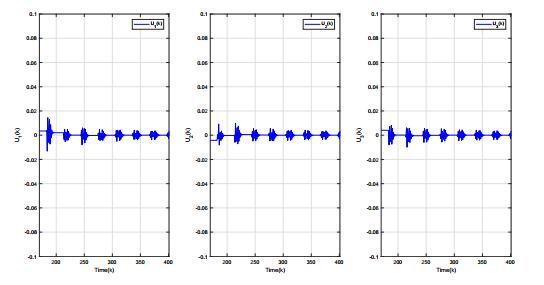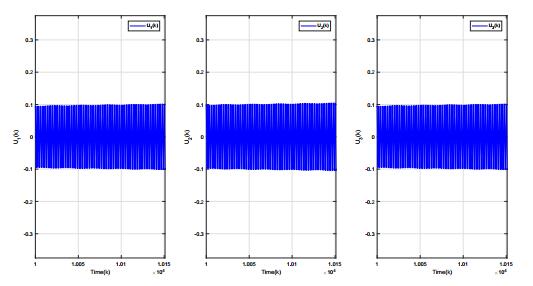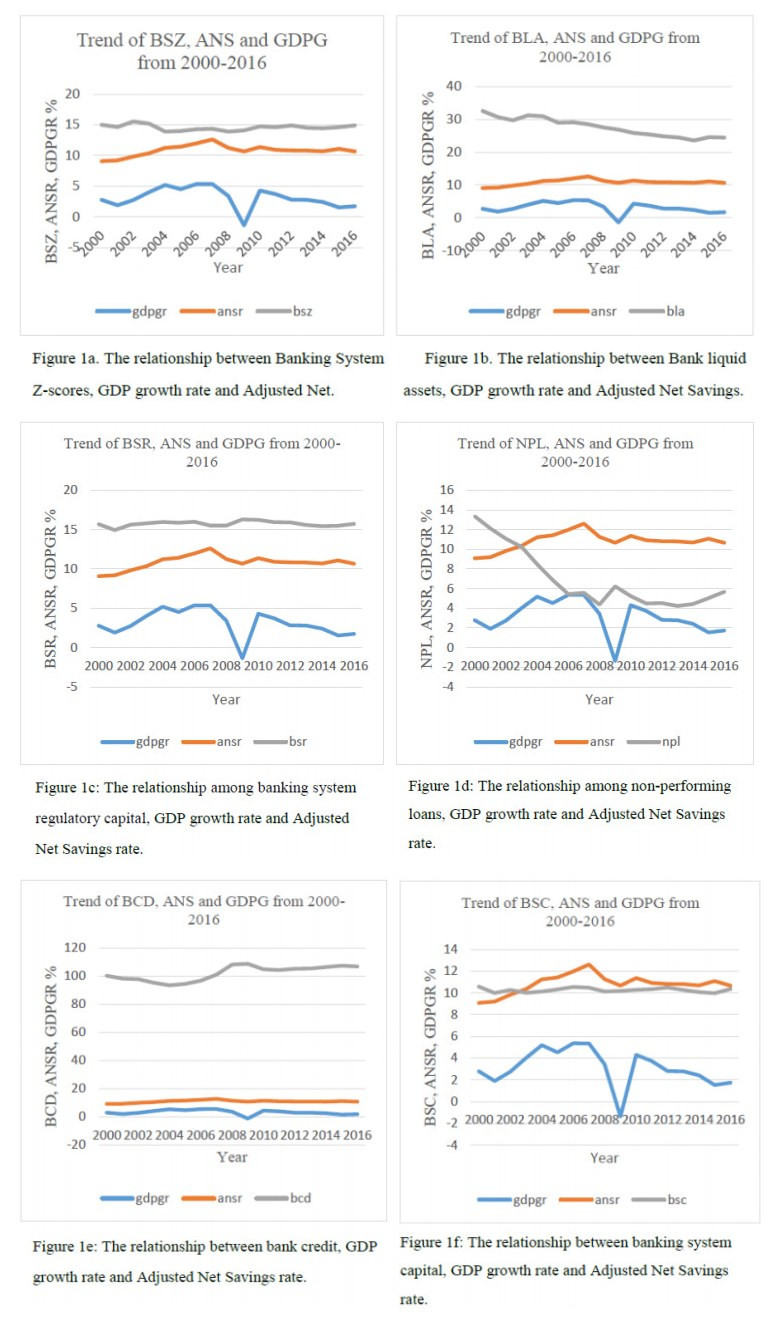The study investigated the effects of banking system stability on economic sustainability from the perspective of 37 developing economies for the period 2000-2016. The study applied panel data models precisely fixed effects and random effects models. Hausman test of endogeneity revealed fixed effects model as the most appropriate in all estimations. Our empirical analysis revealed the following key findings: First, the study revealed that banking system z-scores has positive effect on economic sustainability of developing economies while banking system regulatory capital and bank credit have negative effects on economic sustainability among selected developing economies. Second, while banking system z-scores, bank liquid assets and bank credit have positive effects on economic sustainability of BRICS economies, bank liquid assets and bank credit have negative effects on economic sustainability of non-BRICS economies except banking system zscores, which has a positive effect. In addition, banking system z-scores has positive effect on economic sustainability of Asian and non-Asian economies. However, non-performing loans and bank credit has negative effects on economic sustainability of Asian economies while banking system regulatory capital has negative effect on economic sustainability of non-Asian economies. We conclude that banking system stability play a role in economic sustainability developing economies. However, banking system stability has differing effects on economic sustainability of BRICS and non-BRICS economies; and Asian and non-Asian economies.
1.
Introduction
It is well known that stability properties of Hopfield-type neural networks (see, for example, [1], [2]) have been widely used in optimization problems, associative memory, pattern recognition and signal processing (see, for example, [3], [4], [5], [6], [7]). Early researches on stability of the equilibria of Hopfield-type neural networks mainly involves ordinary differential equations. However, time delays are inevitable in the propagation of electrical signals between neurons or in complex signal processing. Therefore, time delays are commonly found in artificial neural networks. At the same time, a large number of theoretical studies show that time delays may have complicated and unpredictable impacts on local or global dynamics of neural networks. Time delays may destroy stability properties of the equilibria of neural networks and cause their orbits to oscillate and even become chaotic etc.
Due to both the universality of time delays in the real world and the importance of constructing the neural networks, many mathematical researchers have paid great attention to Hopfield-type neural networks with time delays and a great amount of results have been achieved (see, for example, [8], [9], [10], [11], [12], [13], [14], [15], [16], [17], [18]).
Compared with continuous Hopfield-type neural networks, theoretical studies on discrete Hopfield-type neural networks are much less. However, discrete Hopfield-type neural networks may have rich kinetic behavior.
In an ideal case, the discrete Hopfield-type neural networks should be produced in a way to reflect the dynamics of the continuous counterparts. Specifically, the discrete networks should inherit the dynamical characteristics of the continuous networks, and also maintain functional similarity to the continuous system and any physical or biological reality that the continuous has[19]. However, unfortunately, as pointed out in [20], discrete neural networks can hardly maintain the dynamics of continuous counterparts even during very short sampling periods. Therefore, it is crucial to study the similarity of the dynamic properties between the discrete neural networks and the continuous counterparts.
It should be mentioned that, based on the analytical method on the distribution of the roots of transcendental functions developed in [24], some sharp conditions are obtained for delay independent stability of a class of additive neural networks are given in [25].
In [26], [27], [28] and [29], by constructing suitable nonlinear algebraic equations and using the results in [25] and the properties of M-matrix in [30], some sufficient conditions and necessary conditions for global attractivity of retarded and neutral Hopfield-type neural networks are obtained.
The purpose of the short paper is to extend the methods in [24], [25], [26], [27], [28] and [29] to the analysis for global attractivity of a class of discrete Hopfield-type neural networks with time delays. This paper is organized as follows. In Section 2, a class of discrete Hopfield-type neural networks with time delays and some basic assumptions are given. Then, ultimate boundedness of the solutions of the discrete neural networks is considered by establishing a class of related nonlinear algebraic equations. At the same time, for convenience, some equivalent conditions of M-matrix are introduced. In Section 3, global attractivity of the discrete neural networks is discussed, and a sufficient condition is given. In Section 4, necessary conditions for stability of the discrete neural networks are obtained. To prove the necessary conditions, several important lemmas similar to [24] and [25] have been extended to the discrete neural networks. Finally, in Section 5, a 3-dimensional discrete Hopfield-type neural networks with time delays is considered by the method of numerical simulations. The numerical simulations show that, under certain conditions, the sufficient condition is very close to the necessary condition.
2.
Discrete Hopfield-type neural networks with time delays and its dissipation
The following n-dimensional discrete Hopfield-type neural networks with time delays is considered,
In (2.1), Z+ denotes the set of all nonnegative integers. Ui(k) denotes the potential(or voltage) of the ith neuron at time k. bi is the real constant which represents the ith neuron receives itself's feedback. aij is the real constant which represents the synaptic connection weight between the jth neuron and the ith neuron. fj(U) denotes the nonlinear processing function in the dendrites of neurons. The time delay τij is the nonnegative integer which represents the signal propagation delay from jth neuron to ith neuron. As pointed out in [1], fj(U) can be regarded as a smooth input-output function because the biological information in neurons often lies in a short-time average of the firing rate[21]. Hence, fj(U) can be regarded as a continuously differentiable function with respect to the variable U. Based on biological meanings, it is assumed that the following conditions are satisfied.
(H1) |bi|<1(i=1,2,...,n).
(H2) fi(0)=0, |fi(U)|≤1 (U∈R), limU→−∞fi(U)=−1, limU→+∞fi(U)=1 (i=1,2,...,n).
(H3) f′i(U)>0 (U∈R), f′i(0)=supU∈Rf′i(U)=1 (i=1,2,...,n).
Remark 2.1. Based on [22] and [23], the constant bi represents the rate with which the ith neuron will reset its potential(or voltage) to the resting state in isolation when disconnected from the networks. Hence, the assumption (H1) is reasonable in biology. Moreover, according to [2] the nonlinear processing function fj can be considered as some sigmoidal function with saturation properties. Therefore, the assumptions (H2) and (H3) have rationality in biology.
Remark 2.2 For convenience, and without losing the generality of theoretical analysis, it is assumed that the external inputs are equal to 0 in (2.1). When there are constant external inputs in (2.1), similar to [22] and [25], the neural networks can be transformed to a system similar to (2.1) without external inputs.
The initial condition for (2.1) is given as ui(s)=ϕi(s),(s=−r,−r+1,⋯,0,i=1,2,⋯,n), where ϕi(s) are given real constants, r=max{τij|i,j=1,2,⋯,n}. It is clear that the solution U(k)=(U1(k),U2(k),⋯,Un(k))T of (2.1) with the above initial condition is existent and unique for all k∈Z+.
(2.1) always has the equilibrium U=(0,0,⋯,0)T≡0. This paper mainly discusses sufficient conditions for global attractivity of U=0 and necessary conditions for stability of U=0.
First, similar to [26] and [27], we have the following important result on dissipation of (2.1).
Lemma 2.1. If (H1) - (H3) hold, then any solution U(k) of (2.1) satisfies lim supk→+∞ |Ui(k)|≤Mi, where each Mi satisfies the following nonlinear algebraic equations,
where ¯fj(Mj)=max{fj(Mj),−fj(−Mj)}(i=1,2,⋯,n).
Proof. By (2.1) and (H2), it has
Note that |bi|<1 by (H1), it further has
For ∀ε>0, there is a positive integer K0, such that |Ui(k−τij)|≤Mi,0+ε (i=1,2,⋯,n,k>K0). According to (H3), it has
Hence,
Let ε→0. It has lim supk→+∞|Ui(k)|≤Mi,1, where
Repeating the above process, there has a decreasing sequence {Mi,p}, which satisfies lim supk→+∞|Ui(k)|≤Mi,p, where
Denote lim supp→+∞Mi,p=Mi (i=1,2,⋯,n). It has limk→+∞supk|Ui(k)|≤Mi, where
Lemma 2.2. ([30]) Define the set of real matrices Zn×n≜{Z=(zij)|zij≤0,i≠j, i,j=1,2,⋯,n}. For any C∈Zn×n, the following conditions are equivalent:
(i) All the principle minors of C are nonnegative.
(ii) For any vector x≠0, let y=Cx, then there is some i∈{1,2,⋯,n} such that xi≠0 and xiyi≥0.
If C∈Zn×n satisfies any of the above conditions, then C is called an M-matrix.
3.
Sufficient conditions for global attractivity
In this section, we will give sufficient conditions for global attractivity of U=0 of (2.1).
Define the matrix C∈Zn×n as follows:
Using the similar method in [28], it has the following result for global attractivity of U=0 of (2.1).
Theorem 3.1. If C is an M-matrix, then U=0 of (2.1) is globally attractive for any time delays τij (i,j=1,2,⋯,n).
Proof. According to Lemma 2.1, any solution U(k) of (2.1) satisfies lim supk→+∞|Ui(k)|≤Mi, where
Subsequently, it will be shown that there must be Mi=0 for all i=1,2,⋯,n.
Firstly, it assumes that Mi>0 for all i=1,2,⋯,n. Then according to (3.1), (H2) and (H3), it has that n∑j=1|aij|>0 (i=1,2,...,n). Hence, it has that ¯fj(Mj)<Mj(j=1,2,...,n). which further implies that
i.e., CM<0, here M=(M1,M2,⋯,Mn)T>0.
Denote x=M>0 and y=CM. Then for all i∈{1,2,⋯,n}, it has
which contradicts to the condition (ⅱ) in Lemma 2.2. Therefore, it must have that there is at least some j such that Mj=0.
Without loss of generality, it is assumed that Mn=0. Afterwards, it can be shown from (3.1) that
With the same method as discussed above, it has that M2=M3=⋯=Mn−1=Mn=0. Finally, it has from (3.1) that
If a11=0, it is clear that M1=0. If a11≠0, it has that
i.e., (1−|b1|−|a11|)M1<0, which is a contradiction to C being an M-matrix (hence 1−|b1|−|a11|≥0). Therefore, there must be M1=0. In summary, it has that M1=M2=⋯=Mn=0.
4.
Necessary conditions for stability
In this section, we will consider the necessary conditions for stability of U=0 of (2.1). First of all, from (H2) and (H3), it has the following linearized system of (2.1) at U=0,
The characteristic equation of (4.1) is
Motivated by the results in [24] and [25], it has the following important Lemmas 4.1, 4.2 and 4.3.
Lemma 4.1. Assume that bi≤0 (i=1,2,⋯,n). If det(C)<0, then there exist the time delays τij∈N (i,j=1,2,⋯,n) such that the characteristic equation (4.2) has a root λ with |λ|>1.
Proof. Let us assume that λ≠0. Consider the following equation,
Let us define the function,
where
For z=reπi (r∈R+) and ε=0, (4.3) becomes
According to bi≤0, it has R(1)=detC<0. Furthermore, R(+∞)=+∞>0. Since R(r) is continuous in R, it has from Lagrangian mean value theorem that there exists r∗>1 such that R(r∗)=0. Therefore, z∗=r∗eπi is a root of F0(z)=0. Obviously, for small ε>0, |Fε(z)−F0(z)| is also small enough. By Rouché's Theorem, Fε(z)=0 has a root ^z∗(ε) in the neighborhood of z∗ such that |^z∗|>1.
Denote λ∗≜^z∗+ε. Obviously, it has |λ∗|>1 as ε is small enough. According to the selection method of τij in (4.4), it has from (4.3) that
This proves that λ∗ is a root of the characteristic equation (4.2) such that |z∗|>1.
Lemma 4.2. Assume that bi≤0 (i=1,2,⋯,n). If C is not an M-matrix, then there exist the time delays τij∈N (i,j=1,2,⋯,n) such that the characteristic equation (4.2) has a root λ with |λ|>1.
Proof. From Lemma 2.2, if C is not an M-matrix, then there exists at least one negative principal minor of C. Without loss of generality, it is assumed that the sequential principal minor Cl of order l of C is negative, namely, det(Cl)<0.
The characteristic equation of Cl is as follows,
By method similar to the proof of Lemma 4.1, there exist time delays τij∈N+ (i,j=1,2,⋯,l) which satisfy (4.4) such that the characteristic equation (4.5) has a root satisfying |λ∗|>1.
Applying Laplace expansion, P(λ) can be written as
Observing (4.2), it is easy to see that, both S(λ,λ−τij) and T(λ,λ−τij) contain the terms aijλ−τij(i,j=l+1,⋯,n). Therefore, when |λ|>1, |S(λ,λ−τij)| and |T(λ,λ−τij)| can become sufficiently small by choosing τij (i,j=l+1,l+2,⋯,n) to be large enough. Again using Rouché's Theorem, it has that (4.2) has a root ˜λ∗ in the neighborhood of λ∗ satisfying |˜λ∗|>1.
Lemma 4.3. ([31]) If the system (4.1) has a characteristic eigenvalue λ satisfying |λ|>1, then U=0 of (2.1) is not stable.
From Lemma 4.2, Lemma 4.3 and Lemma 4.3, it has the following result.
Theorem 4.1. Assume that bi≤0 (i=1,2,⋯,n). If C is not an M-matrix, then there exist time delays τij∈N+ (i,j=1,2,⋯,n) such that U=0 of (2.1) is not stable.
Remark 4.1. Based on [2], the Ui(k) of (2.1) refers to the potential of the ith neuron at time k. The sign of Ui(k) indicates the neuron being at the action potential or the resting potential. In terms of a single neuron (ignoring the interactions among neurons), when a neuron at resting potential receives a stimulus input, the neuron's potential will be at an action potential at next time. Similarly, when neuron's stimulation at the action potential is terminated, the neuron will be resting at next time. Therefore, to a certain extent, this explains the biological significance of the condition bi≤0 (i=1,2,...,n) in Theorem 4.1.
5.
Numerical simulations and conclusions
In this paper, global attractivity and stability of the equilibrium U=0 of (2.1) have been considered. In Theorem 3.1, sufficient conditions are given for global attractivity of U=0 for any time delays τij (i,j=1,2,...,n). In Theorem 4.1, under certain conditions, necessary conditions are presented for stability of U=0 for any time delays τij (i,j=1,2,...,n).
Theorem 3.1 shows that, under certain conditions, for global attractivity of the equilibrium, the discrete Hopfield-type neural networks (2.1) can maintain consistent conditions with continuous counterparts in [25] and [28]. Meanwhile, it is also confirmed that the discrete Hopfield-type neural networks can inherit some of biological dynamic properties of the continuous ones. Furthermore, based on [1] and [2], when the discrete Hopfield-type neural networks (2.1) behaves as an associative memory or a content addressable memory, the state near the equilibrium contains information about the memory. Hence, under the conditions in Theorem 3.1, the memory is truly addressable and allows information to be stored around the equilibrium. On the other hand, according to the following numerical simulations, it can be showed that when a discrete Hopfield-type neural networks does not satisfy the conditions in Theorem 4.1, the potential (voltage) of the neurons will not reset in the resting state, but becomes oscillatory.
It should be pointed out that the condition "bi≤0 (i=1,2,...,n)" in Theorem 4.1 may be a technical condition and is likely to be further improved.
Finally, as a simple application of the conclusions of this paper, let us consider the following 3-dimensional discrete Hopfield neural networks with time delays,
where b2≤0, f(x)=tanh(x).
Let b2=−0.3, (5.1) satisfies the conditions of Theorem 3.1, and detC=0. Hence, U=0 is globally attractive for any time delays τij (i,j=1,2,3). Figure 1 is corresponding numerical simulation.
On the other hand, let us change the value of b2 from b2=−0.3 to b2=−0.33, it has detC=−0.01<0. According to (4.4), the time delays τij (i,j=1,2,3) are selected as follows,
From Theorem 4.1, it has that U=0 is unstable. Figure 2 is corresponding numerical simulation, which shows that the solution becomes oscillatory.
Acknowledgments
This work is supported by National Key R & D Program of China (2017YFF0207401) and NNSF of China (No.11471034) for W. Ma.
Conflict of interest
The author declares no conflicts of interest in this paper.










 DownLoad:
DownLoad:





